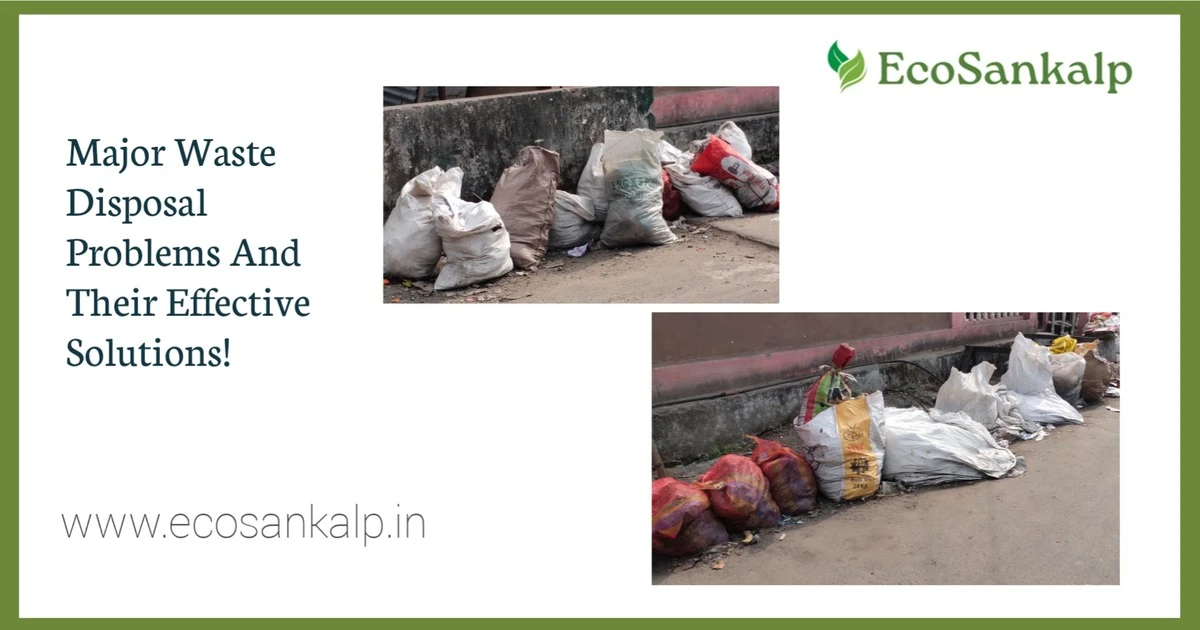Understanding different types of dustbin colour code is crucial for proper waste management that helps preserve the environment.
We, humans create various types of waste, such as household waste, dry waste, industrial waste, medical waste, radioactive waste, and so on.
Each waste has its own characteristics that demand unique disposal methods and time frames. Some wastes are less toxic, whereas some are highly harmful to environmental and human health.
That’s the reason we have to learn different dustbin colour code
and their uses.
Page Contents
Types of Waste and Dustbin Colour Code In India
By understanding the different dustbin colour code, individuals, communities, and businesses can streamline the process of recycling, composting, and disposing of waste.
Here are eight different colour dustbins with their appropriate use. However, it’s important to note that you can see different adaptions in different regions (in India) that might unmatched with those given below.
1. Green Dustbin (Organic Waste)
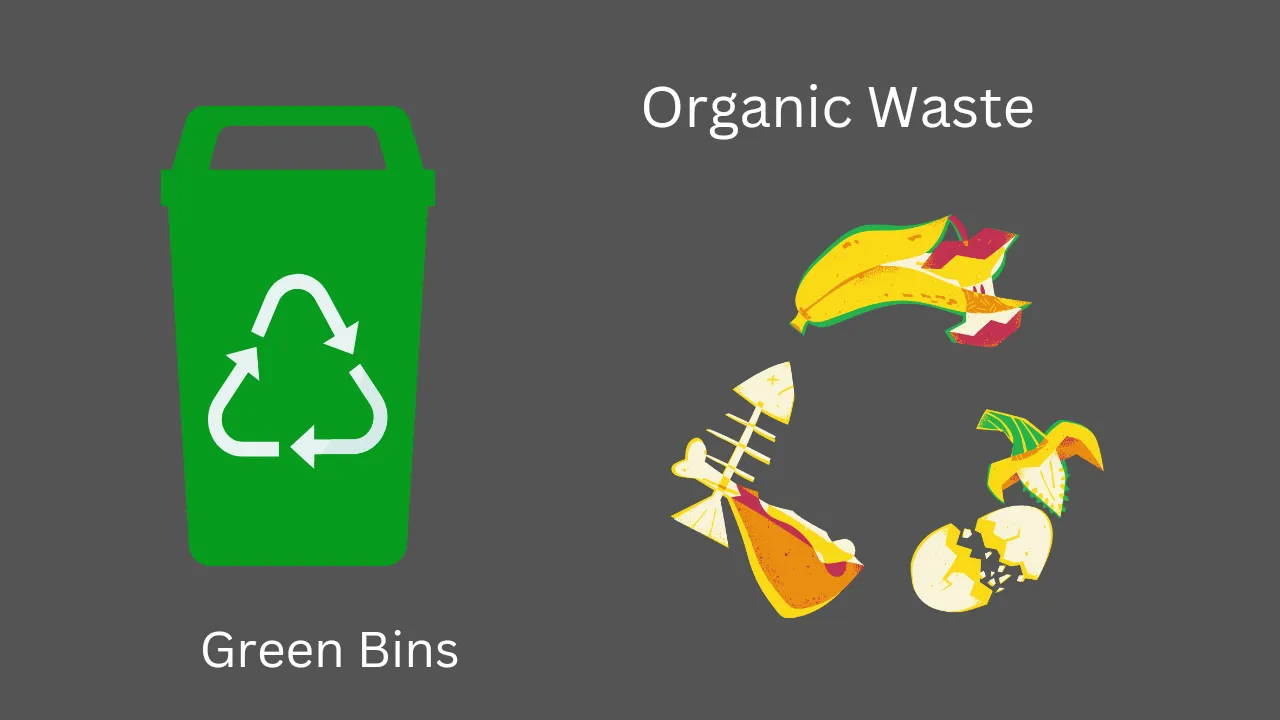
Examples:
- Eggshells, Food Scraps, Yard Waste, Animal Manure, Plant Trimmings, Red Meat, and more.
Green Bins are specifically made for organic waste that is biodegradable such as vegetable waste, fruit waste, garden waste, animal waste, and more.
This dustbin is widely used in kitchens where large amounts of organic waste are created from preparing food to trashing leftovers.
If these organic waste end up in landfills, they will release harmful gases such as Methane (CH4), Carbon Dioxide (CO2) and Nitrous Oxide (N2O) that harm the environment.
Out of those, methane is a strong greenhouse gas (found in organic waste) that potentially aid to global warming if these waste are mismanaged or end up here and there.
This could be avoided if we properly segregate, dispose, and compost our day-to-day organic waste by using these green dustbins.
2. Blue Dustbin (Recyclable Waste)

Examples:
- Newspapers, Magazines, Cardboard Boxes, Plastic Bottles, Plastic Containers, Glass Bottles, Glass Jars, Metal Cans, Aluminum Foil, Vessels, and so on.
Blue Bins are often used for trashing recyclable waste that can be reused to create new products.
Some of the examples are paper, cardboard, plastic items, glass items, metal products, and more that consist reusable materials.
These bins can be used to promote recycling which helps conserve resources, reduce energy consumption, and minimize the amount of waste sent to landfills or incinerators.
3. Red Dustbin (Hazardous Waste)
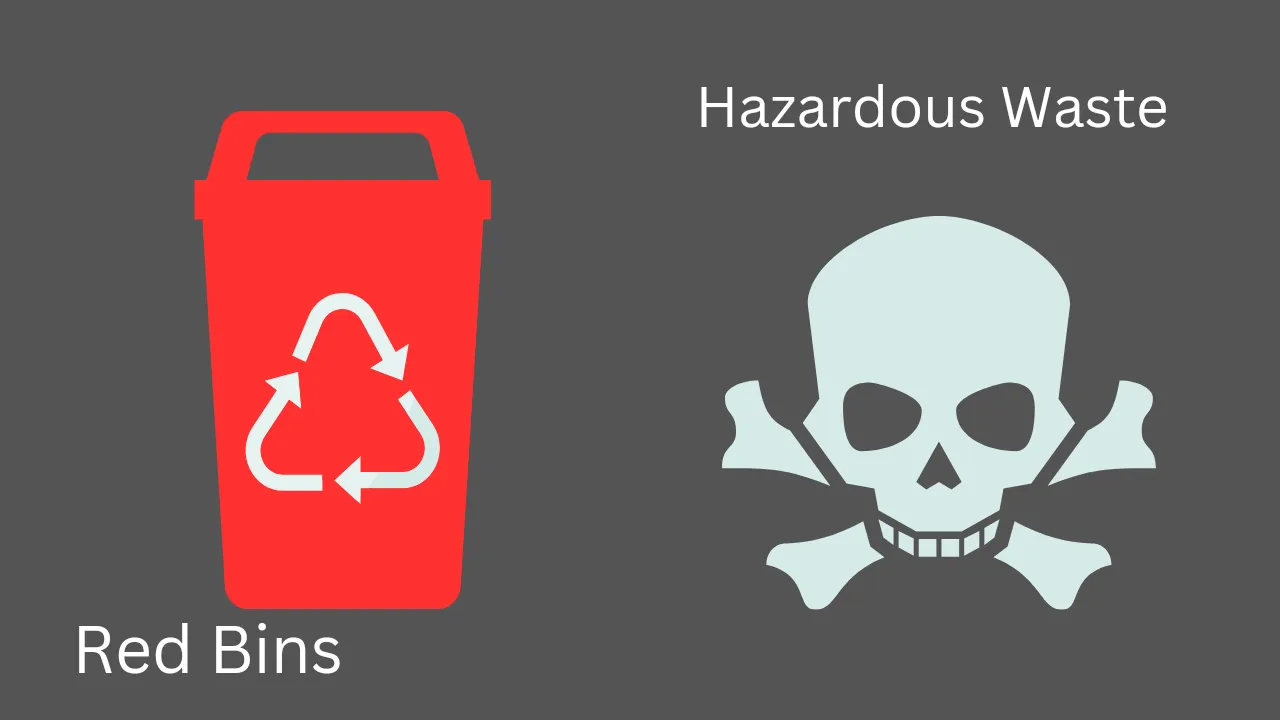
Examples:
- Chemicals, Pesticides, Medical Waste, Radioactive Waste and more that are harmful.
Red Bins have the toughest work as they are used for hazardous waste that is potentially risky for human health and the environment.
They often used to trash toxic waste such as damaged batteries, fluorescent bulbs, chemicals (cleaning agents, pesticides), pharmaceuticals, and medical waste (needles, syringes).
Proper segregation and disposal of hazardous waste becomes crucial to prevent pollution and protect public health.
4. Yellow Dustbin (Biomedical Waste)
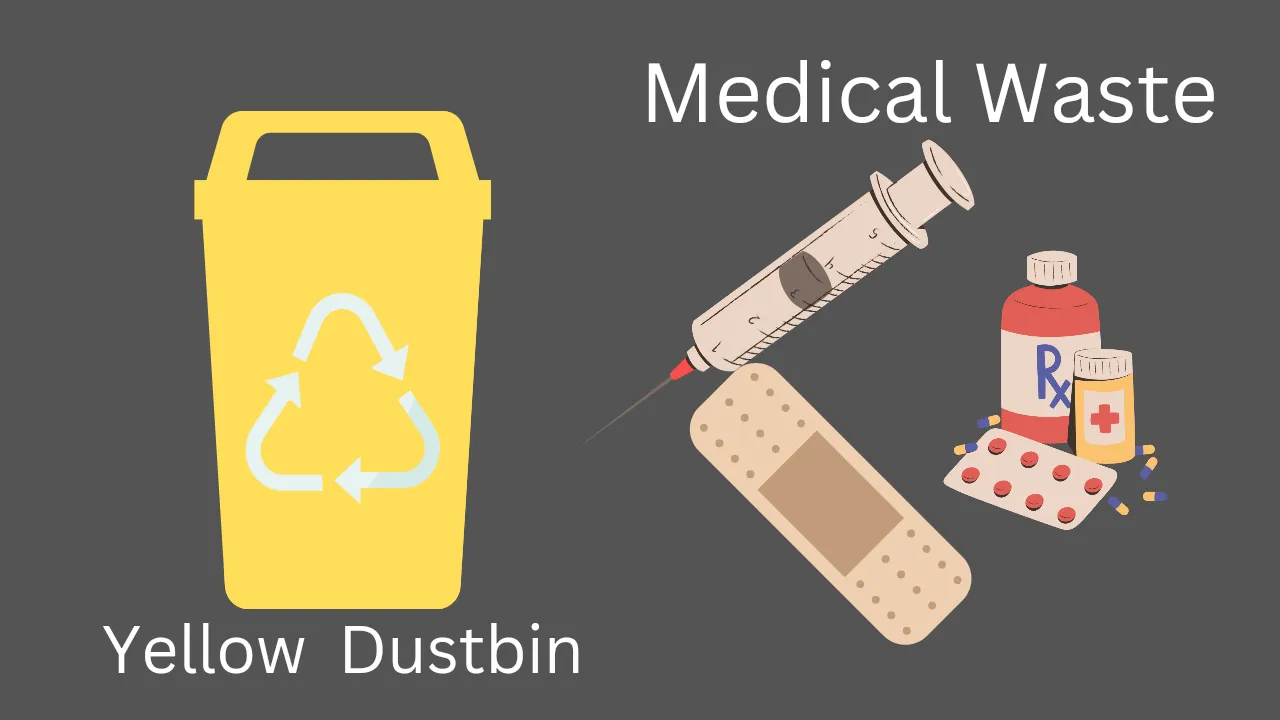
Examples:
- Used Needles, Syringes, Lancets, Blood-soaked Bandages, Pathological Waste, Expired Medicines, and more.
Similar to red bins, yellow bins are also used for toxic waste especially those produced in hospitals or by medical work.
Medical Wastes that are generated from healthcare facilities, laboratories, and research institutions can pose a serious health risk to humans and some extent other animals if they’re mismanaged or end up in landfills. It can be poisonous and spread infections.
Proper segregation and handling of these types of waste will eliminate the health and environmental risks associated with medical waste.
5. White Dustbin (E-Waste)
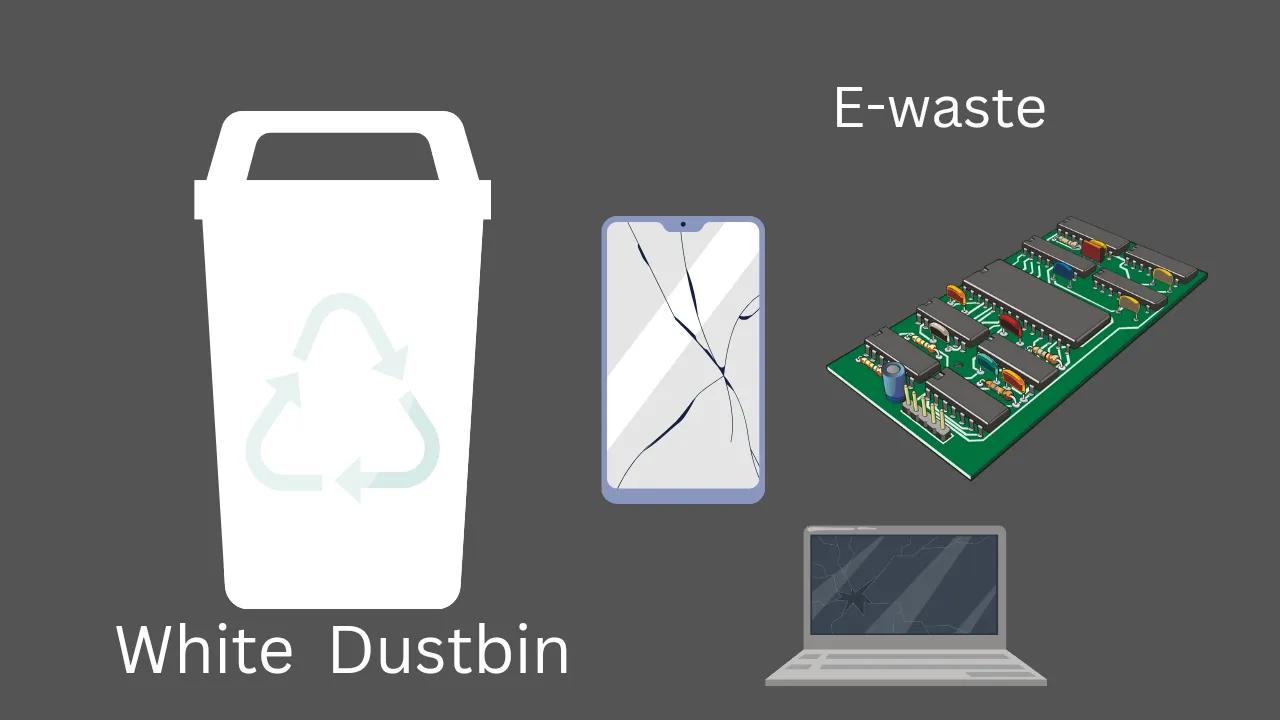
Examples:
- Old Computers, Laptops, Mobile Phones, Televisions, Headphones, and other electronic items and their parts.
White Bins are often used for trashing electronic waste or e-waste. Some of these waste can be upcycled and recycled for repurpose.
Research shows e-waste is increasing in India with a compounding rate of 10%, contributing a major role in pollution in our country.
This can be reduced if every individual commits to properly managing and disposing of their e-waste. We can eliminate soil contaminants, water contaminants, and pollution in landfills by using white bins for trashing e-waste and later proper disposal.
6. Brown Dustbin (Compostable Waste)
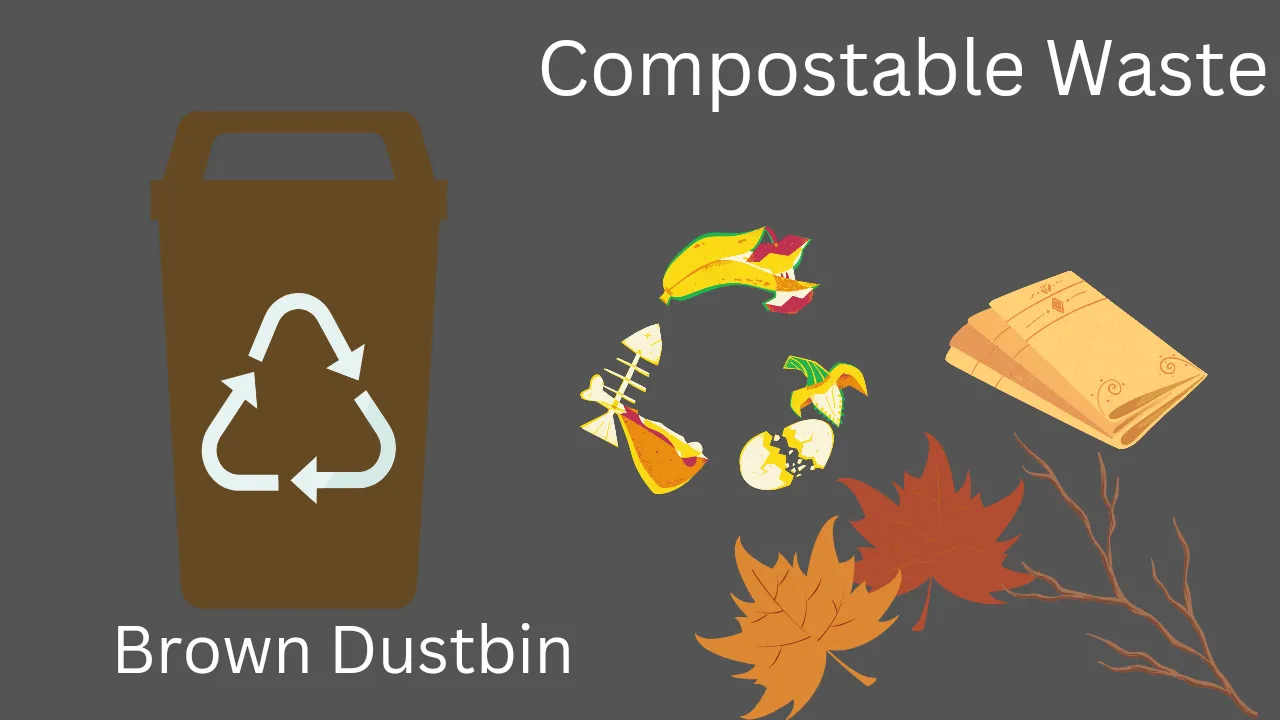
Examples:
- Dry Leaves, Twigs, Straw, Sawdust, Paper Napkins, Cardboard Rolls, and other Plant-Based Waste.
Brown Bins are used to store waste for the purpose of composting that can be used as fertilizers.
Things like organic waste, paper napkins, vegetable peels, and other materials that can break down naturally into compost are often trashed in brown bins.
These wastes mainly produce methane gas which can play a role in climate change and global warming.
By proper handling and practicing composting you can save our Earth as well as make organic fertilizers that you can use to enrich your garden’s or agricultural soil.
7. Orange Dustbin (Construction and Demolition Waste)
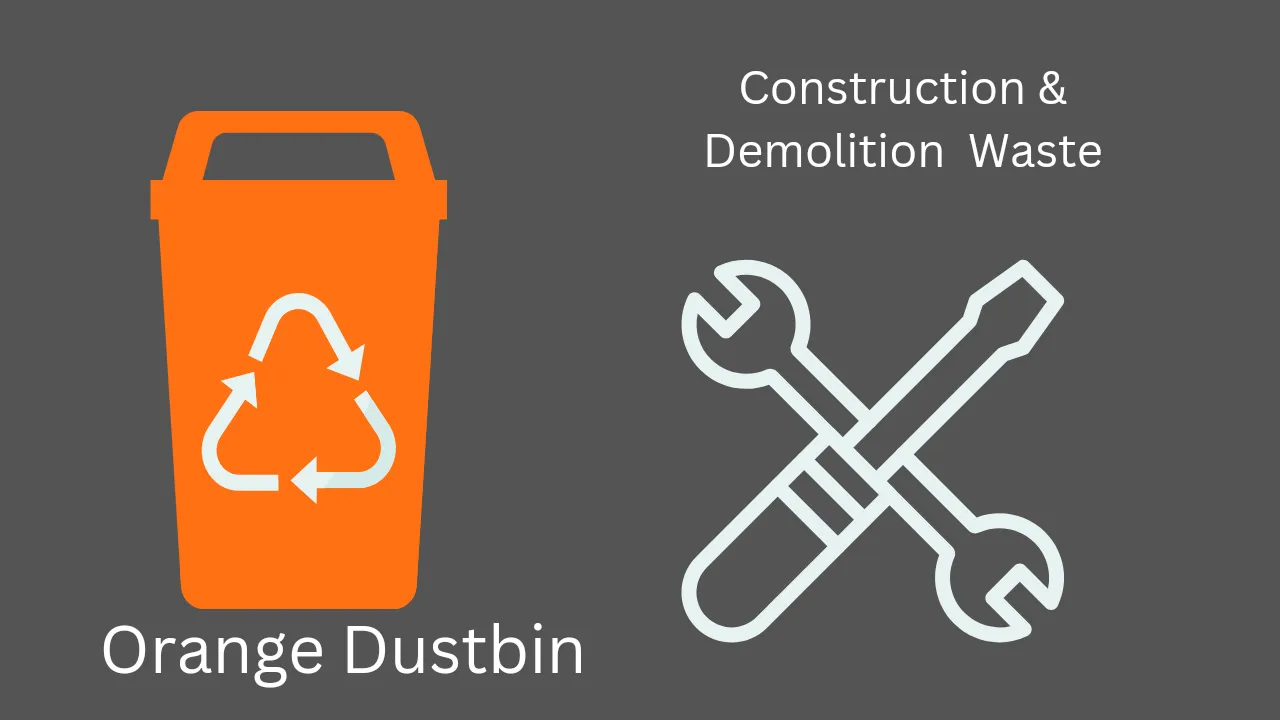
Examples:
- Concrete, Bricks, Wood, Asphalt, Tiles, Plasterboard, Metals, Rubble, and so on.
Orange Bins are used for demolition activities, constructing, building, renovation, and by many other these type of works.
This type of waste are usually large in amount and would take significant land if they’re mismanaged or end up in landfills by polluting the environment.
It becomes crucial to trash and properly decompose construction and demolition waste for a clean and green environment.
If we properly segregate this waste in the right bin, much of them are recycled which further promotes resource conservation.
8. Black Dustbin (General Waste)
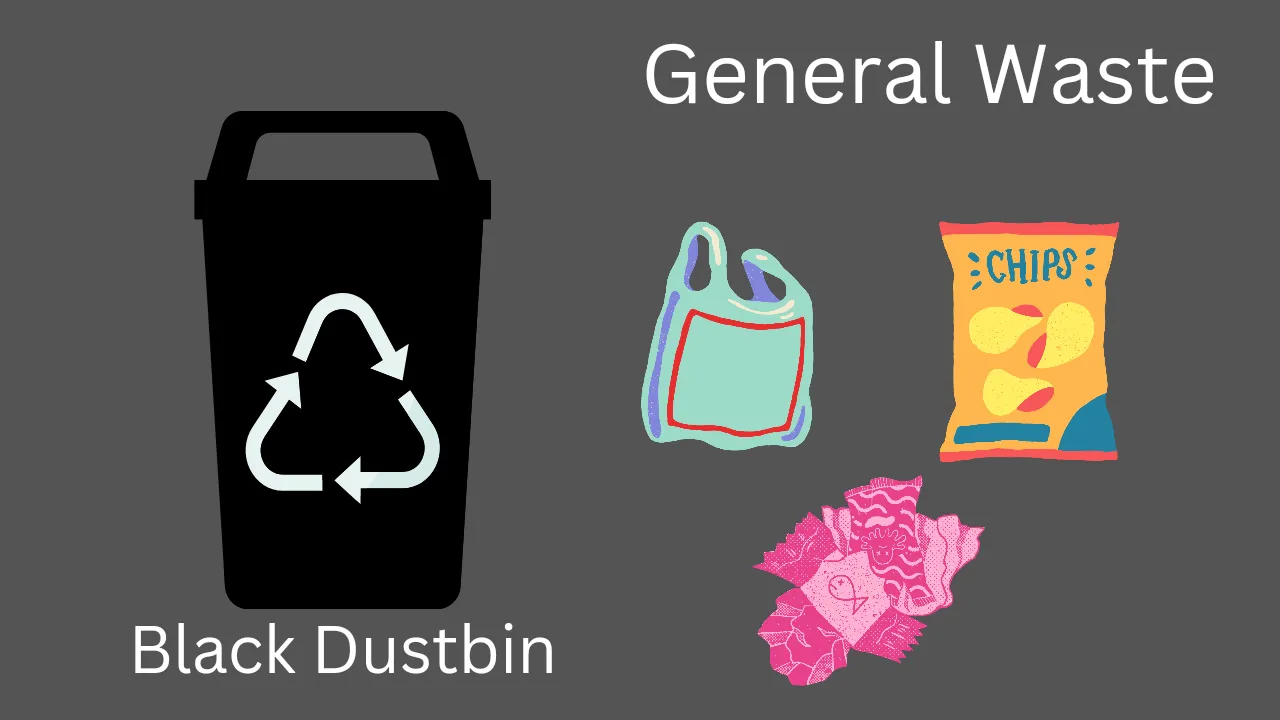
Examples:
- Plastic Packaging, Rubber, Old Clothes, Diapers, Pet Waste, and many more.
Black Bins are often used for trashing common household items that are neither recycled nor composted. For example, non-biodegradable items and items that are not suitable for recycling and composting.
As general waste is often tossed away by people that end up in landfills and pollute the environment, black bins can be used to segregate that waste.
Why Waste Management Is Important In India?
Improper management of waste results in higher pollution in landfills, and most populated countries like India usually generate higher waste per annum.
According to fairplanet.org, the solid waste generation in India is predicted to reach 165 million tonnes by 2030, that’s huge!
Waste in landfills is a serious issue in our country that is affecting the whole ecosystem. Therefore, waste management becomes crucial.
We, as responsible citizens need to manage our waste properly by practicing proper waste segregation.
Waste Segregation (separating different types of waste) promotes proper disposal and reduces the amount of waste sent to landfills or incinerators.
Conclusion
Waste Segregation is important for waste management. We create varieties of waste in our day-to-day lives and if we do not sort out those waste into separate categories or dustbins; it will be difficult to properly manage or dispose of.
Waste Segregation helps us identify different categories of waste such as recyclable, compostable, hazardous, upcycled materials, and general waste.
Therefore, we conserve natural resources by practising recycling, reducing pollution in landfills by practising proper waste management, protecting public health by properly segregating hazardous waste, and eliminating environmental risks due to mismanaged wastes.
